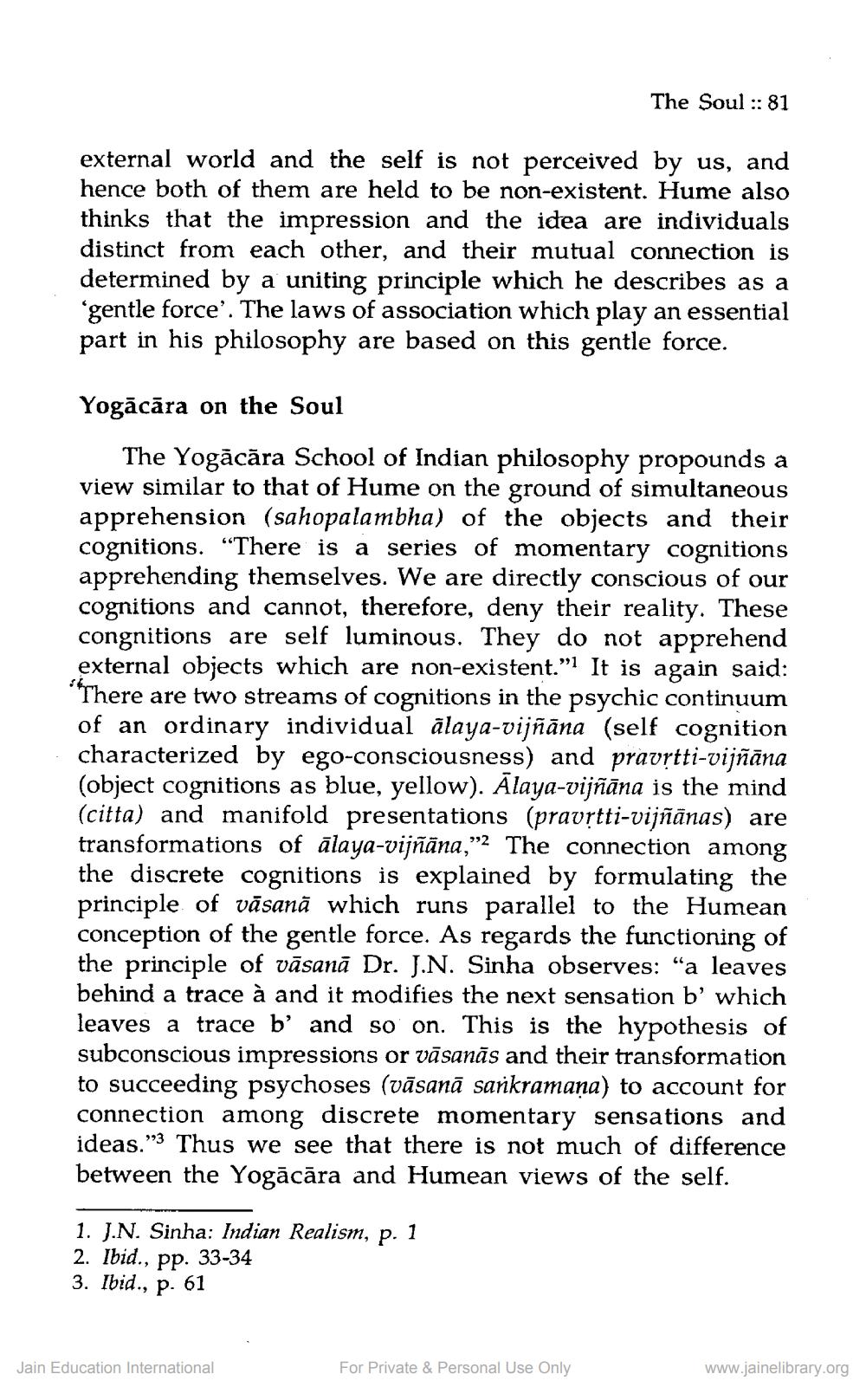________________
The Soul :: 81
external world and the self is not perceived by us, and hence both of them are held to be non-existent. Hume also thinks that the impression and the idea are individuals distinct from each other, and their mutual connection is determined by a uniting principle which he describes as a ‘gentle force'. The laws of association which play an essential part in his philosophy are based on this gentle force.
Yogācāra on the Soul
The Yogācāra School of Indian philosophy propounds a view similar to that of Hume on the ground of simultaneous apprehension (sahopalambha) of the objects and their cognitions. “There is a series of momentary cognitions apprehending themselves. We are directly conscious of our cognitions and cannot, therefore, deny their reality. These congnitions are self luminous. They do not apprehend external objects which are non-existent.”! It is again said: *There are two streams of cognitions in the psychic continuum of an ordinary individual alaya-vijñāna (self cognition characterized by ego-consciousness) and pravrtti-vijñāna (object cognitions as blue, yellow). Alaya-vijñāna is the mind (citta) and manifold presentations (pravstti-vijñānas) are transformations of ālaya-vijñāna,” The connection among the discrete cognitions is explained by formulating the principle of vāsanā which runs parallel to the Humean conception of the gentle force. As regards the functioning of the principle of vāsanā Dr. J.N. Sinha observes: “a leaves behind a trace à and it modifies the next sensation b' which leaves a trace b' and so on. This is the hypothesis of subconscious impressions or vāsanās and their transformation to succeeding psychoses (vāsanā sarikramana) to account for connection among discrete momentary sensations and ideas."3 Thus we see that there is not much of difference between the Yogācāra and Humean views of the self.
1. J.N. Sinha: Indian Realism, p. 1 2. Ibid., pp. 33-34 3. Ibid., p. 61
Jain Education International
For Private & Personal Use Only
www.jainelibrary.org




